RESEARCH WORK
Research projects
Importance of research on our SAVE programs
Our research division is very important in our Education for Conservation strategy. The results from our methodologies in different research areas inform us on our actions that come up with positive results to resolve conflicts or to design mitigation measures on co-existence, we also gather evidence that support and confirm certain animal behaviors and hence contribute to developing lessons for our environmental education and playgroups hence increase knowledge on the children.
Results from research is then be used to develop seasonal conflict avoidance techniques on the one hand and to predict how this probably uniquely large wildlife population were cut off by anthropogenic developments or others.
Our research arm has a direct link and informs the community development projects, e. g. animal behavior especially as we work with communities in wildlife management area periphery, communities are capacitated on how they should handle themselves if they encounter wildlife like elephant, children are being taught how to identify certain animals’ spoors, and skat, of animals in their environment. It has a major impact on designing our awareness raising programs, posters, children’s’ workbooks, teachers’ curriculum, as well as giving communities chance to share lessons learnt as well as learn from other existing and successful community projects
Wolf
Wolves under cover: The importance of human-related factors in resting site selection in a commercial forest
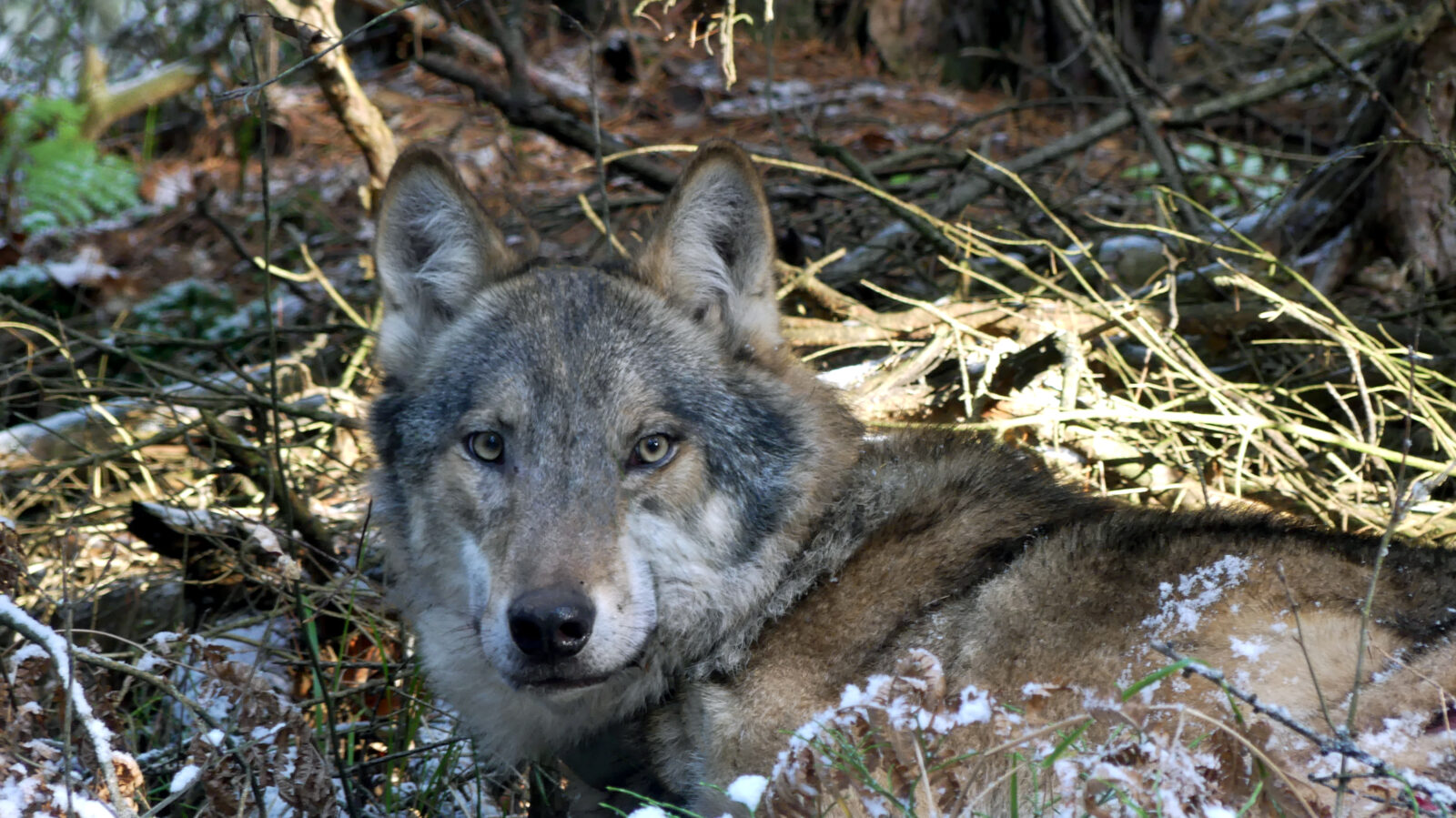
From:
Katarzyna Bojarska, Luca Maugeri, Ralph Kuehn, Wiesław Król, Jörn Theuerkauf, Henryk Okarma, Roman Gula, July 2021
Summary:
The authors investigated winter selection of resting sites by wolves in a commercial pine forest to test if roads, settlements, and type of forest influenced the resting behaviour of wolves during the day and at night. At the landscape scale, wolves selected resting sites that were farther from settlements, public roads and high-traffic forest roads than random points. At the fine scale, wolves chose sites that were more concealed and farther from the closest forest road than random points. During the day, wolves tended to rest in thickets and forest with understorey, whereas at night they rested in more open habitats. The concealment of resting sites was higher when wolves rested closer to high-traffic forest roads and during the day. The results indicate that certain forestry practices enhance concealment opportunities and might therefore be beneficial for wolves.
Research paper:
Stress-hormone levels of wolves in relation to breeding season, pack size, human activity, and prey density
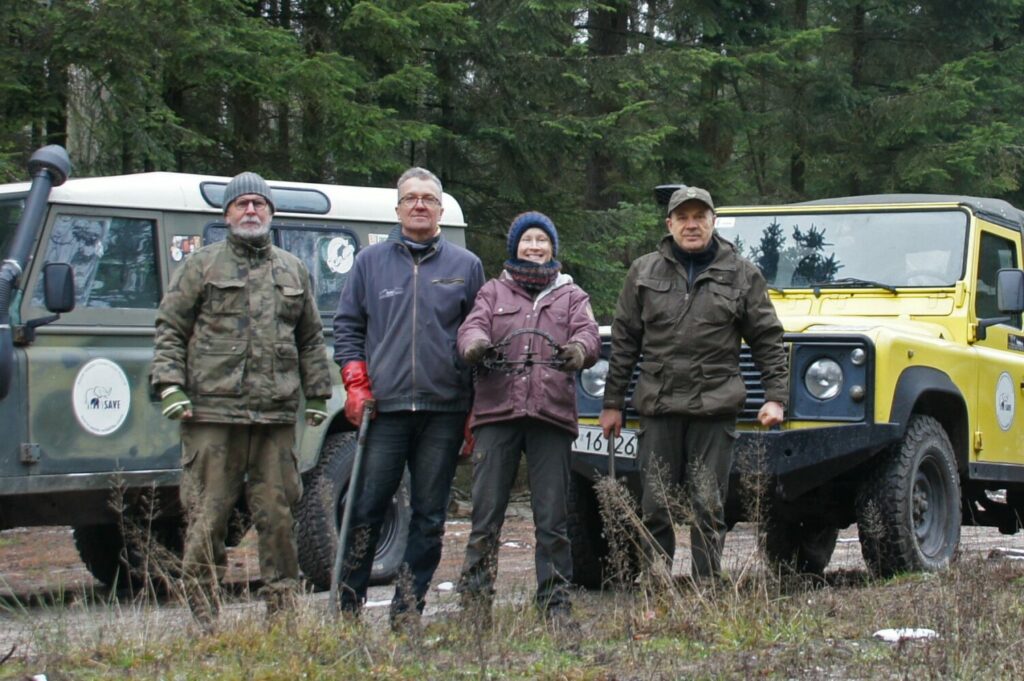
From:
Julia Eggermann, Jörn Theuerkauf, Bartosz Pirga, Artur Milanowski, Roman Gula, July 2012, Poland
Summary:
Human disturbance is thought to be a major source of stress for animals but breeding status, social interactions and food availability are also potential sources. Long-lasting stress may adversely affect the fitness of animals and for that reason the evaluation of stressors is important for conservation of threatened species. The aim of our study was therefore to assess which factors cause stress in wolves (Canis lupus). We evaluated the stress levels of wolves from six packs by measuring the concentration of glucocorticoid metabolites in 59 faecal samples with a Cortisol enzyme-immunoassay. During the breeding season, stress hormone concentration was higher than during the rest of the year, with two peaks around mating and begin of denning, respectively. Multiple regressions ranked by AIC showed that breeding had the highest impact on the wolves’ stress levels, followed by human activity, pack size, and prey density. We conclude that human activity is only one of several factors contributing to stress in wolves and that intraspecific competition during breeding is likely to cause elevated levels of glucocorticoids.
Research paper:
Anthropogenic environmental traps: Where do wolves kill their prey in a commercial forest?

From:
Katarzyna Bojarska, Magdalena Kwiatkowska, Piotr Skórka , Roman Gula, Jörn Theuerkauf, Henryk Okarma, 2017
Summary:
Selection of kill sites is an important part of predation. In human-modified habitats, anthropogenic land-scape features may increase or decrease hunting efficiency of predators. We investigated which habitat attributes increase predation success in wolf Canis lupus hunting for ungulates in an intensively managed forest of western Poland. We used GPS telemetry and snow-tracking to locate kill sites.
Reserach paper:
Opportunity and peril: how wolves use a dense network of forest roads
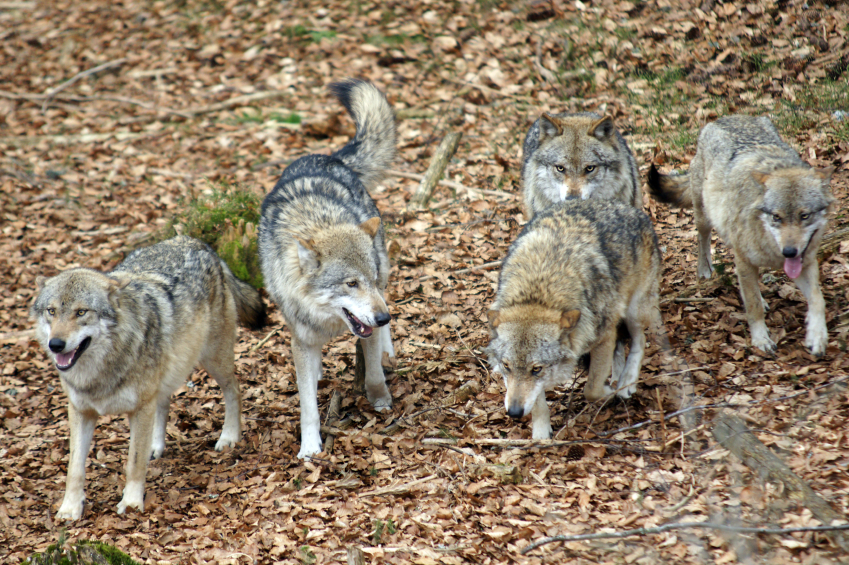
From:
Katarzyna Bojarska, Joanna Sulich, Sibyll Bachmann, Henryk Okarma, Jörn Theuerkauf,Roman Gula, August 2018
Summary:
We investigated by snow tracking and GPS telemetry how wolves Canis lupus used a dense (4 km/km2) network of forest
roads for travel and scent marking. Forty-six percent of wolf trails but only 4.6% of telemetry locations were on forest roads.
Wolves used forest roads to travel fast and far across their home ranges but spent relatively little time on roads, especially
on those with high traffic levels and during the time of highest human activity. The probability of scent marking was higher
on roads than off-road and increased with traffic intensity on roads and close to junctions. Our findings suggest that wolves
take advantage of the forest road infrastructure, while minimising human encounters by spatio-temporal avoidance of all
roads, even those with negligible traffic. The ongoing expansion and improvements of the forest road network might lead to
elevated costs for wolves associated with avoidance of humans and roads.
Research paper:
Recent Arrivals or Established Tenants? History of Wolf Presence Influences Attitudes

From:
Elizabeth Gosling, Katarzyna Bojarska, Ralph Kuehn, 2019
Summary:
Human dimensions are a critical part of large carnivore conservation. We investigated how thehistorical presence of wolves(Canis lupus)influences public attitudes toward the carnivore and its manage-ment in rural areas of Poland. From March 2016 to March 2017, we used a self‐administered questionnaire toassess attitudes of rural residents(n=292)and foresters(n=325)in 6 regions where wolves have either beencontinuously present, or where they have recently recovered after a period of absence.
Research paper:
Re-evaluation of the wolf population management units in central Europe (2020)

From:
Roman Gula, Katarzyna Bojarska, Jörn Theuerkauf, Wiesław Król and Henryk Okarma, 2020
Summary:
In this paper, we aim at answering four main questions regarding the current status of wolves in the Polish lowlands:
1) which is the stage of recovery of wolves in western and in eastern Poland? 2) Is the Central European population isolated from the Baltic population? 3) Are there considerable differences in habitat quality on each side of the Vistula? 4) Is it pragmatic to divide wolves inhabiting the Central European lowlands along the Vistula river into two management units?
Research paper:
Re-evaluation of the wolf population management units in central Europe
Lion
Dynamics of human-lion conflict in and around the Makgadikgadi Pans National Park, Botswana
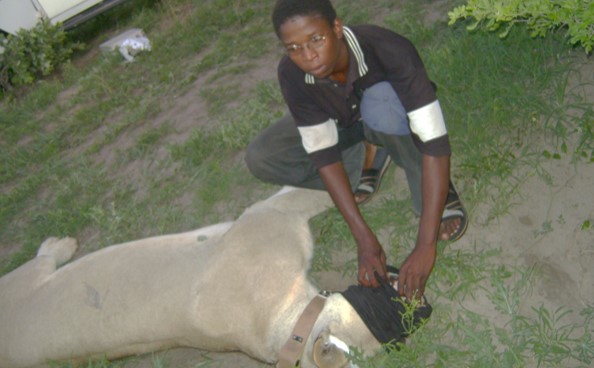
From:
Keitumetse Ngaka, November 2015
Summary:
Human carnivore conflict is a state where certain carnivore(s) negatively impacts on human or vice versa. The conflict is not limited to specific carnivore species or spatial coverage. Some of the ways to mitigate the impacts experienced include the erection of the fence in order to eliminate or reduce direct contact of the concerned parties such as along the Boteti River area on the western side of Makgadikgadi Pans National Park (MPNP) in Botswana. This study was conducted in and around the MPNP to assess the human-lion conflict level, and factors that might affect the conflict level before, and after the introduction of the Makgadikgadi fence, and flowing of the Boteti River. Livestock kill data for the year 2000 – 2012 from the Department of Wildlife and National Parks, Botswana were used to measure the human-lion conflict levels.
Research paper:
Dynamics of human-lion conflict in and around the Makgadikgadi Pans National Park,
The influence of the Makgadikgadi fence and the re-flowing of the Boteti River on the temporal distribution of human/lion conflict

From:
Keitumetse Ngaka, Lucas Rutina, Graham Hemson and GlynMaude, 2018
Summary:
Incidents of conflict between humans and lions are influenced by a number of factors, some of which are barriers such as fences and rivers. Conflict between carnivores and farmers led the Botswana government to construct a fence along the Boteti River between the years 2004 and 2005 to separate wildlife inside the Makgadikgadi Pans National Park (MPNP) from farmers. Although the fence became porous over time, the reflowing of the Boteti River in 2009 provided a further barrier. The main objective of this study was to assess the influence of the fence and the reflowing of the Boteti River on the temporal distribution of lion predation upon livestock along the Boteti River region. We also determined the level of livestock predation by lions when compared to other carnivores.
Document:
The influence of the Makgadikgadi fence and the re-flowing of the Boteti
Outcomes of lion, Panthera leo, translocations to reduce conflict with farmers in Botswana

From:
Mompoloki Morapedi,Mmadi Reuben, Phemelo Gadimang, James Bradley, William Given, Richard P. Reading, Keitumetse Ngaka, Moses Selebatso & Glyn Maude, Juni 2020
Summary:
Lions, Panthera leo, in sub-Saharan Africa have decreased significantly in both number and distribution during the past two decades. Reasons for this include declines in wild prey species, habitat destruction, and increased conflict with farmers, especially along the borders of
conservation areas.
Farmers often harbour negative attitudes towards carnivores (and lions pose a potential threat to human safety and livelihoods. As a
result, livestock farmers frequently kill carnivores, even in the absence of direct losses. In an effort to reduce human wildlife conflict, the
translocation of large carnivores that kill livestock commonly occurs, but the effectiveness of this practice remains debatable.
In this paper, we analyse the data collected from the collars to find out how the translocated lions moved, what their survival rates were, and, where relevant and possible, their cause of death.
Research paper:
Outcomes of lion, Panthera leo, ranslocations to reduce conflict with farmers in Botswana
The Ecology and Management of Kalahari Lions in a Conflict Area in Central Botswana

From:
Kevin MacFarlane
Summary:
African Lions (Panthera leo) are an integral aspect of natural ecosystems in Africa and provide income and ecosystem services to many human communities. They directly regulate herbivore populations, which in turn maintain grasslands and associated systems. Those ecosystems have degraded in recent decades and the concurrent decline in lion population is believed to play a role. I investigated factors affecting lion behaviour and ecology including the effect of seasonal variation in wild prey herd size. Current levels of herbivore prey are significantly lower than before the creation of countrywide veterinary cordon fences and total lean season biomass was estimated at 375.5 kg.km-2. I placed GPS position locating radio collars on 13
lions in 6 prides in a study area of approximately 9,911 square kilometres in the north of the Central Kalahari Game Reserve (CKGR), in central Botswana. The collars acquired total of 241,858 usable GPS fixes and I visited each lion monthly.
Research paper:
The Ecology and Management of Kalahari Lions in a Conflict Area in Central Botswana
Wild dogs
Scent marking and dietary patterns of african wild dogs in nothern Botswana

From:
Mr. Botilo Thato Tshimologo, October 2014
Summary:
African wild dogs are endangered and their populations continue to decline in many African reserves. These declines have been largely associated with a variety of anthropogenic biotic and abiotic dynamics. The conservation and sustainable management of the African wild dogs requires proper scientific understanding of its basic ecology. Better scientific knowledge on the scent marking behaviour and dietary habits of African wild dogs is likely to help scientists‟ strategic management of the species. This thesis discusses the scent marking characteristics and dietary patterns of African wild dogs in parts of northern Botswana. Scan sampling and all occurrences sampling methods were used to observe 24 (16 adult and 8 sub adult) African wild dogs from three packs between August 2010 and April 2012.
Research paper:
Hyena
Population ecology, conservation status and genetics of the spotted hyena
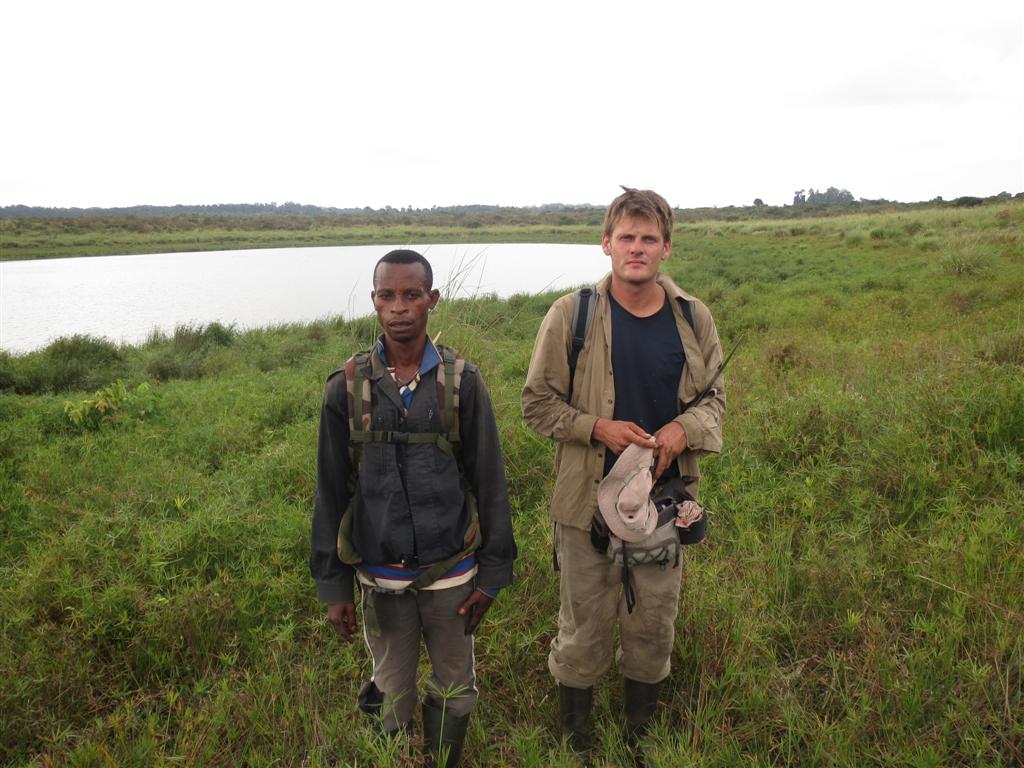
From:
Torsten Bohm, Juni 2015
Summary:
The spotted hyena is a large carnivore with a distinct social behavior. Like other large predators of Africa, the spotted hyena is threatened by habitat loss as well as direct conflicts with humans.
Much of central Africa is covered by tropical rainforest. The Batéké Plateaux area, which covers nearly two-thirds of the Republic of Congo and into neighboring Gabon, is the remnant of what was once a vast savanna ecosystem. Today, spotted hyenas are found only in the small forest-savanna mosaic of Odzala-Kokoua National Park in northwestern Republic of Congo. The spotted hyena population in OKNP represents the only remaining spotted hyena population in the Batéké Plateaus and Congo Basin.
In order to implement successful conservation strategies, close monitoring of this population is necessary. The aim of Torsten Bohm’s PhD thesis was to investigate the population status and ecology of the spotted hyena in Odzala-Kokoua National Park (OKNP). The study focused on estimating population abundance and density, examining diet, which provides information on prey base, and examining den sites and features. These provide important baseline information for better protection of these key sites critical to the population’s reproductive success.
Research paper:
Population ecology, conservation status and genetics of the spotted hyena
Wildebeest
Adaptive activity patterns of a blue wildebeest population to environmental variability in fragmented, semi-arid Kalahari, Botswana

From:
M. Selebatso, R. Fynn, G. Maude 2016
Summary:
The blue wildebeest (Connochaetes taurinus) population in semi-arid savannah regions face intense spatial and temporal environmental variability over the annual cycle. The population in the Kalahari has lost critical seasonal ranges outside the protected areas due to human induced landscape changes. The population is faced with sparse and patchy forage availability, seasonally very high day temperatures, high predation pressure and limited availability and variable quality of water. We investigated the adaptive strategies of wildebeest in the Central Kalahari Game Reserve with a focus on how daily activity patterns respond to environmental variability in semi-arid Kalahari. The population coped with heat stress by maximizing their activity in the cool hours of the day. They avoided predation pressure and loss of body condition by minimizing activity at night and in dry seasons, respectively. We conclude that seasonal variations in temperature and light play a critical role in the timing of foraging activity.
Research paper:
Water provision alters wildebeest adaptive habitat selection and resilience in the Central Kalahari

From:
Moses Selebatso, Emily Bennitt, Glyn Maude, Richard W. S. Fynn, 2017
Summary:
To compensate for losses of accessible surface water, artificial water points have been constructed in the reserve. Water supply alters the habitat choice and resilience of wildebeest in the Central Kalahari. A wildebeest herd that did not have artificial water in its habitat survived the dry season, whereas wildebeest that were accustomed to watering supply died when their water points failed during the dry season; thus, water supply altered adaptive behaviour and reduced population resilience to the dry environment.
Selebasto assessed the water quality of 12 artificial waterholes against Botswana and international standards for drinking water for wildlife.
Research paper:
Water provision alters wildebeest adaptive habitat selection
Wildebeest ecological dynamics in the CKGR: The implications for potential isolation from the wider Kalahari ecosystem
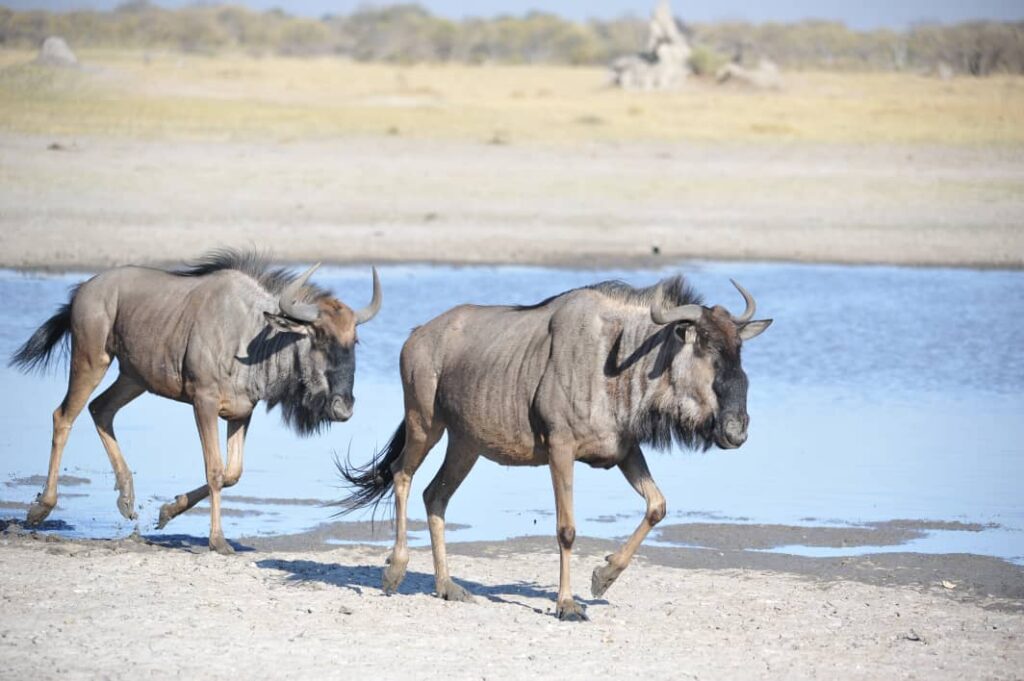
From:
Moses Selebatso, September 2017
Summary:
Survival of wildlife populations in arid savannahs depends on their mobility in regard to habitat heterogeneity as an adaptive response to large spatial and temporal resource variability over the annual cycle and with climatic change. The historic main wet season range of the blue wildebeest (Connochaetes taurinus) in the Kalahari ecosystem was a region with a high density of mineral-rich pans between the Central Kalahari Game Reserve (CKGR) and the Kgalagadi Transfrontier Park (KTP), commonly known as the Kalahari Schwelle. During drought years, wildebeest made long distance movements from the Schwelle through the CKGR to the permanent water of the Boteti River, Lake Ngami and Lake Xau in Northern Botswana and some to the south west towards the Nossob River. Access to water sources in the north has been prevented by fences, and movement routes from the CKGR to the Schwelle is increasingly encroached upon by human and livestock, and land use change.
Research paper:
Nature Africa
Undermining game fences: who is digging holes in Kalahari sands?
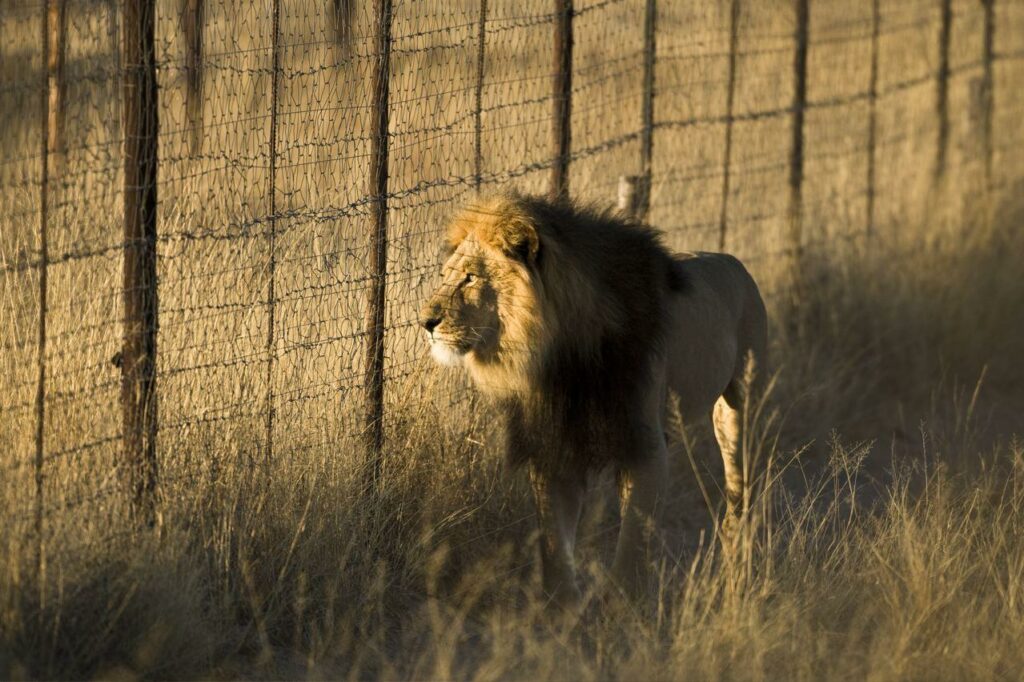
From:
Kristina M. Kesch, Dominik T. Bauer and Andrew J. Loveridge, 2013
Summary:
The effectiveness of game fencing as a tool to promote coexistence between humans and wildlife is highly dependent on the maintenance of fences. It is vital to identify animal species, which dig holes under fences, and their digging behaviour to maintain game fences appropriately. We provide data on some of southern Africa’s
major hole-digging animal species for a simple albeit effective method enabling stakeholders to categorize species that are digging holes underneath game fences in deep sand habitats by species-specific knowledge on sizes and shapes of holes.
Research paper:
Undermining game fences who is digging holes in Kalahari sands
Assessment of quality of water provided for wildlife in the Central Kalahari Game Reserve, Botswana
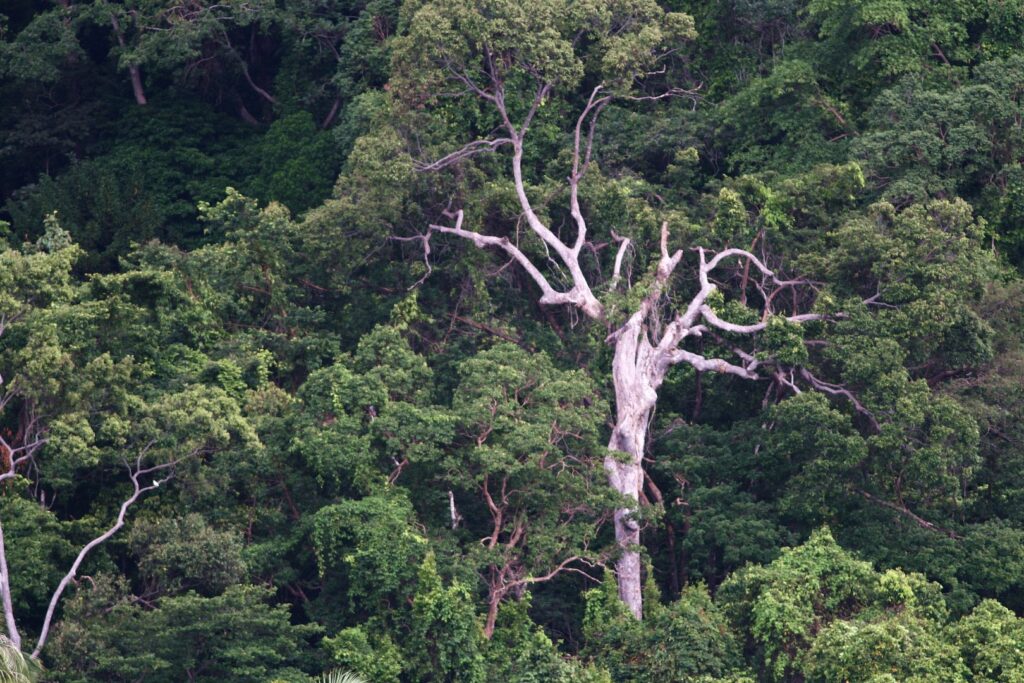
From:
Moses Selebatso, Glyn Maude, Richard W.S. Fynn, April 2017
Summary:
Arid and semi-arid environments have low and unpredictable rainfall patterns resulting in limited availability of surface water for wildlife. In the Central Kalahari Game Reserve (CKGR) wildlife populations have lost access to natural surface water through cordon fences, livestock and human encroachment along the access routes. Artificial waterholes have been developed in the reserve to compensate for this loss. However, there have not been any assessments of the quality of water provided for wildlife and how that may be contributing to populations declines in the CKGR. We assessed water quality from 12 artificial waterholes against both Botswana and international livestock standards for drinking.
Research paper:
Assessment of quality of water provided for wildlife in the Central Kalahari
Nature Cameroon
Large mammal and Fish Fauna assessments in the planned oil palm concession area of Herakles Farms in SW Cameroon
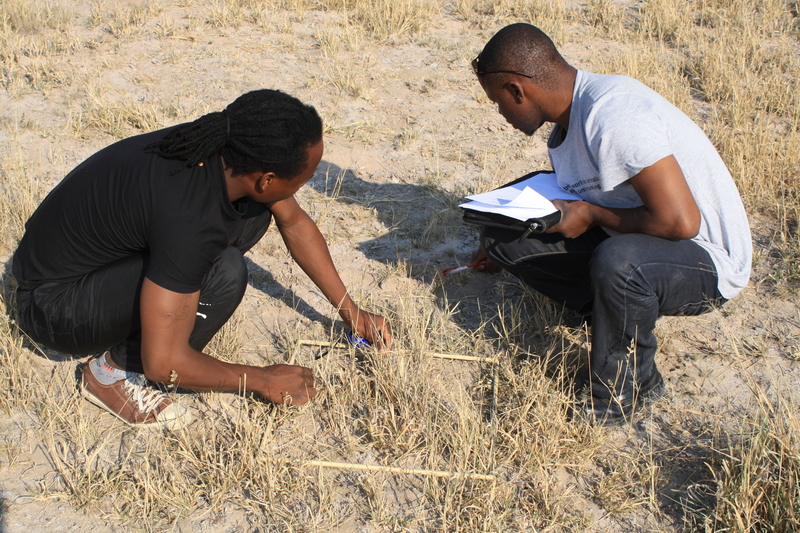
From:
Dr. Matthias Waltert, 27 June 2013
Summary:
The forest block along the Cameroonian-Nigerian border (ca. 25,000 km²) is the largest continuous rainforest in the whole of the West African biodiversity hotspot – most forest in western West Africa (west of Nigeria) is already severely fragmented. Cutting the ‚heart’ out of this contiguous rainforest region will not be without consequences. Populations of species in a large and intact ecosystem are viable whereas small and fragmented populations have a much increased extinction risk. Already since the 1960ies, both theoretical ecology as well as empirical research have provided a basic understanding of the relationship between area size and species richness: in vertebrates, a reduction of original area by ten will lead to a reduction of species by 50%: this means, fragments of 2,000 km² theoretically will contain only half of the species present in a similar-sized section of a larger habitat of ca. 20,000 km².
Research paper:
Community development Africa
Alleviating rural poverty through conflict mitigation and improved crop yields
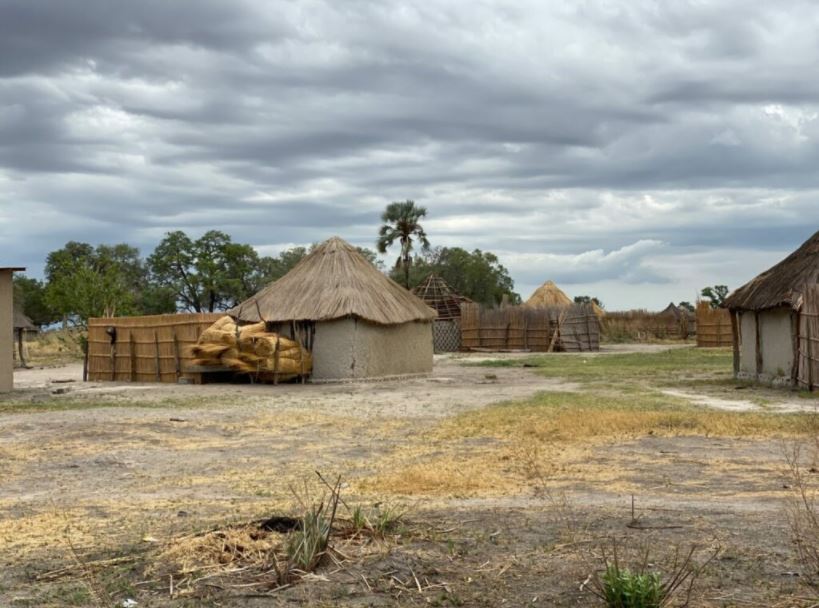
From:
Andrew Loveridge, Kristina Kesch Juni 2019 Zimbabwe, Botswana
Summary:
Western Zimbabwe and north-eastern Botswana are agriculturally marginal, with poor soils and rainfall. However, livelihoods in rural communities rely precariously on subsistence agriculture, especially crop growing and livestock ownership with median household owning 6-10 cattle and 6-10 sheep or goats (data collected through sociological survey during Darwin Initiative project, Research Ethics Committee Reference No. R53944/RE001). Traditionally women bear the burden of land clearance and cultivation with limited access to inputs such as fertilizer or mechanisation. Crop failure in poor years often results in chronic malnutrition, particularly affecting households with no alternative incomes; frequently Darwin Final report format with notes –March 2018 those headed by women. Poverty increases reliance on natural resources, leading to unsustainable, illegal or commercial utilisation of resources such as wood, wildlife products and bush-meat. Simple improvements to cropping methods greatly improve yields and food security, and reduce land and labour requirements and environmental damage. Map of study sites. 1) Tsholotsho 2) Mabale 3) Victoria Falls, Mvuthu/ Shana area 4) Chobe Enclave 5) Khumaga, Makgadikgadi. Around protected areas, livestock predation by large predators, particularly lions, leads to significant loss for already impoverished people. The loss of draught animals further impacts the ability to prepare fields and livestock depredation routinely results in retaliatory killing of globally threatened predators causing population declines and measureable impacts to biodiversity and ecosystem function in protected areas.
Research paper:
Alleviating rural poverty through conflict mitigation and improved crop yields
